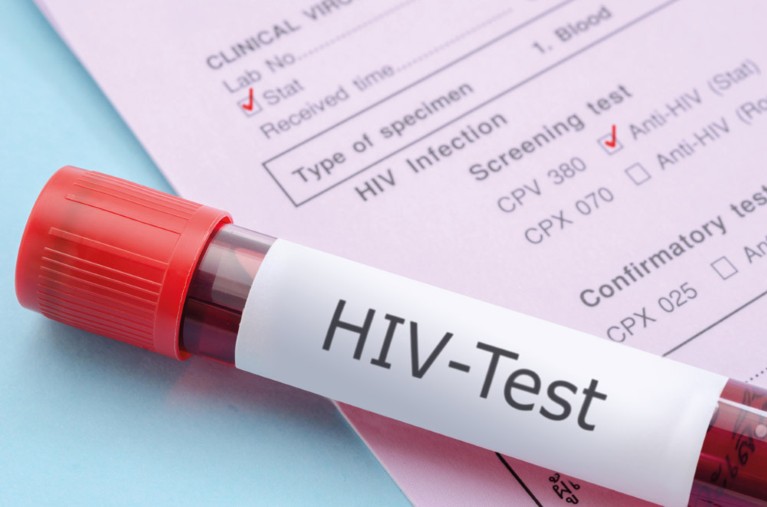
A new peptide-based tool for diagnosing HIV-1 and HIV-2 works by seeking out and binding to the N-terminal on the HIV p24 protein.© Penchan Pumila / Alamy Stock Photo
The human immunodeficiency virus (HIV), and its associated acquired immune deficiency syndrome (AIDS), continuesto have a devastating effect on populations worldwide. Now, researchers in South Africa and Saudi Arabia have made a breakthrough in HIV diagnostics, developing a prototype tool, based on antimicrobial peptides, that offers hope of providing rapid, accurate point-of-care diagnosis.
The most common diagnostic tool for the two predominant HIV viruses, HIV-1 and HIV-2, is the p24 antigen assay. It detects HIV by searching for the presence of a protein called p24, which it recognises via the p24’s C-terminal. However, false negatives are common using this tool, due to obstruction of the C-terminal by p24 antibodies, which are generated during the body’s immune response to HIV infection. It also takes several days to receive resultsfrom the p24 assay, and so a more effective diagnostic tool is urgently needed.
“South Africa has the world’s largest HIV infected population and the government is spending millions on HIV kits from overseas. Yet, as far as we know, no company in the country has produced an HIV diagnostics kit,” says Ashley Pretorius from the University of the Western Cape, who worked on theproject with colleagues in South Africa, Musa Gabere from King Abdullah International Medical Research Center, and an industrial partner, Medical Diagnostech. “Producing an inexpensive kit locally will allow us to tackle HIV and AIDS more effectively while benefitting the country’s economy.”
The team needed to develop a tool that did not rely on the p24 C-terminal. They decided to explore the potential of a naturally occurring subset of immune system proteins called antimicrobial peptides (AMPs), some of which have beenshown to bind to the N-terminal of HIV p24. Pretorius’ team modelled combinations of AMPs and modified AMPs to findthe best ‘fit’ for p24, to ensure accurate and efficient HIV detection in samples from patients.
“The point of contact between two molecules is important because it determines how tightly the molecules bind to eachother,” says Pretorius. “When we have identified a molecule – in this case an AMP – that we know fits well with a target protein, we can substitute amino acids in the right places to make the binding between the two molecules even stronger.”
Their resulting AMP-based prototype diagnostic tool, which is now patented, performed very well in initial tests. The toolachieves accurate diagnosis of both HIV-1 and HIV-2 in only 15 minutes; meaning that, for the first time, effective point-of-care HIV diagnosis could be feasible.


